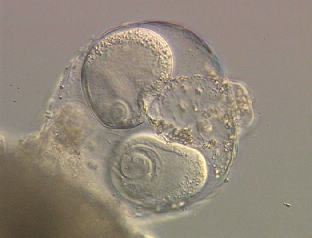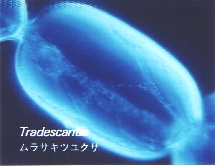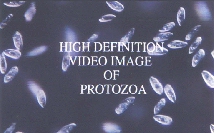
The Sea in the Seed

The latest production is THE SEA IN THE SEED -The Sperm of Ginkgo biloba and Reproductive Evolution in Plants- was completed after 4 years intensive works with scientists of Tsukuba University and Tokyo University. In this video first time we introduce time-lapse shot captured the sperm formation inside the pollen tube of Ginkgo biloba.Starting from single cell greenish algae to gimnosperm double fertilization all important stages of evolution in plants reproduction were captured in video.This video was awarded at the 41th National Science and Technology Film and Video Festival in the spring of 2000.


ICE ALGAE
We shot video time-lapse of development in
this botanical plankton at Low Temperature
Laboratory
in the National Arctic Research Institute
for NHK THE GLOBAL FAMILY.

 The World of Microbes 1958
The World of Microbes 1958
Scientific film making of TokyoCinema has
a long tradition started from middle 50-ies.
The landmark of this period was award wining
THE WORLD OF MICROBES - In Quest of tubercle
bacili - with significant microscopic tame-lapse
cinematography.



Marine Flowers MoonJelly
Where There
is Life, There is Motion
The first important work of TokyoCinema after
the reformation in 1970-ies is the MARINE
FLOWERS - The biosphere of the Coelenterata
- for Ocean EXPO'75. It was a three multi-screen
35mm film demonstration of micro and macro
as well as underwater recording of tiny marine
creature. Since then TokyoCinema introduced
MOON JELLY - Life Cycle of Aurelia aurita -, WHERE THERE IS LIFE, THERE IS MOTION
and other 16mm products with cinemicrography.
All those works received the highest awards
at national as well as international scientific
film festivals.
Using video equipments in TV productions
naturally influenced in scientific film productions
too. At Science EXPO'85 in Tsukuba TokyoCinema
realized first video-micrography in Cell
Fusion. Since the, all productions in scientific
field are shot in video. In 1984, TokyoCinema
together with HAMAMATSU PHOTONICS introduced
results of combination of optical microscope
observation with computer image processing
then in 1987, first time experienced microscopic
recording in High Definition TV. HIGH DEFINITION
VIDEO IMAGE OF PROTOZOA, 1989 was won award
at 31st National Science and Technology Film
and Video Festival.


So many years TokyoCinema continued trial
to shoot time-lapse in video and participated
application development in CRVdisc of SONY.
LIFE OF THE FRESHWATER SPONGE shot video-time-lapse
with CRVdisc won the best academic works
at the RONDA International Scientific Film
Days in Spain.
1998.09.20. started as Japnese sie
final update 2001.08.15.